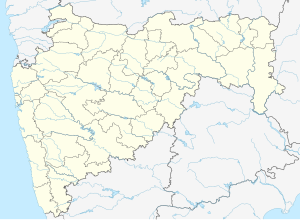Tung Fort
| Tung Fort | |
|---|---|
| तुंग, Kathingad | |

Main entrance to Tung Fort
|
|
| Highest point | |
| Elevation | 1,075 m (3,527 ft) |
| Coordinates | 18°39′37″N 73°27′47″E / 18.660273°N 73.463142°ECoordinates: 18°39′37″N 73°27′47″E / 18.660273°N 73.463142°E |
| Naming | |
| Translation | तुंग किल्ला (Difficult Fort) (Marathi) |
| Geography | |
| Location | Maharashtra, India |
| Parent range | Western Ghats |
| Climbing | |
| Easiest route | Hike |
Tung Fort (or Kathingad; difficult fort in Marathi) is a hill fort in Pune District, India.
It is about 12 km from Malawli railway station and can also be approached from Lonavala. Tung Fort has an elevation of 1075 m above sea level. Since Pawna dam was built, it is now surrounded by water on three sides. One can ferry across in a boat from Pawna dam to its base village, Tungi.
Tung fort is also named Kathingad fort. The word "Kathin" in Marathi means difficult. While climbing, one can experience the difficult challenge of reaching this fort. The fort is conical and has steep climbs with a very narrow route on the edge of the mountain throughout. From Pawana dam, reaching this fort requires a 400-metre climb.
From Lonavala, one can reach the base village Tungwadi around 20 km via Bushy Dam-INS Shivaji-Peth Shahapur-Tungwadi. From Tungwadi village, reaching this fort requires about a 300-metre climb. Road is not so good to travel, work in progress.
Tung Fort was built before 1600 CE. It was built by the Adil Shahi dynasty but was captured by Chatrapati Shivaji Maharaj. It is small, and not able to hold more than 200 troops at a time. As such, it would not have been able to defend itself on its own for a long time. Its shape and structure suggest that its main function was as a watchtower guarding the road to Pune city. The Dhamale family, one of the Deshmukh from the Maval region, was charged with ensuring the security of Tung Fort. During invasion, it served to provide a temporary distraction for invaders. Thus, the major forts of Visapur and Lohagad would have time to prepare themselves to meet the invading army. This fort served as a watchtower in the past because from top of the fort, a lot of area in the Maval region of the Pawana and Mulshi valleys can be seen, and thus, from the top of the fort, a watch on these areas can be kept.
Its sharp, conical peak makes Tung Fort a prominent landmark, even from a distance. It has an oval shape, thick walls and numerous bastions. A steep climb on grassy slopes leads to the ruins of a temple at the summit. A rocky staircase leads several feet down to a water reservoir. From the top of the fort, the Lohagad, Visapur, Tikona and Korigad forts are clearly visible.
...
Wikipedia

